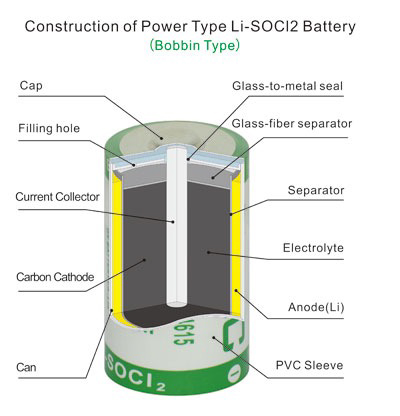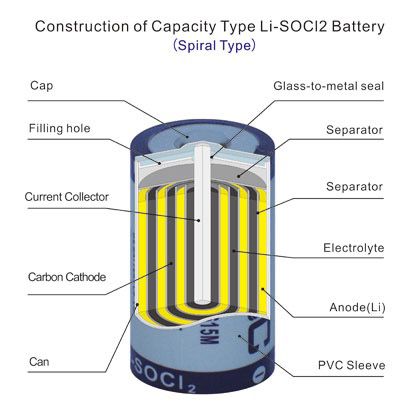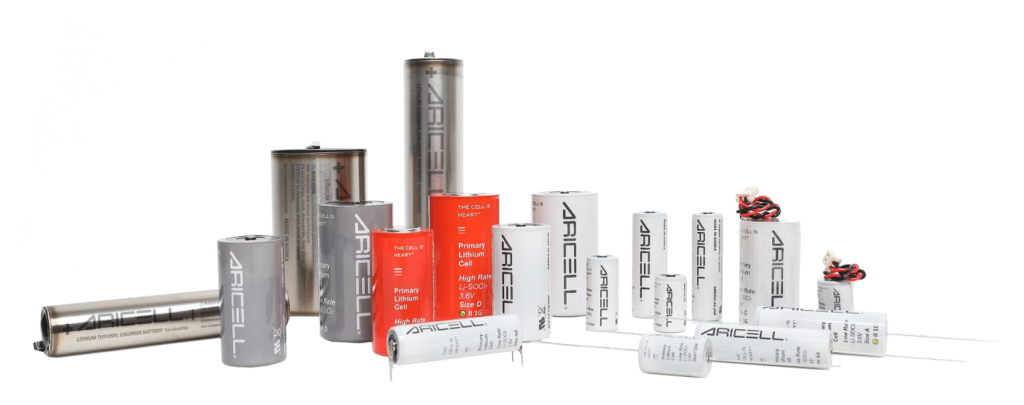Power Your Wireless Sensors: How to Choose the Right Batteries for Sensors
1. Introduction

Wireless Sensors are experiencing rapid growth in a wide range of applications: RFID to GPS tracking, traditional automatic metering applications (AMR) plus advanced metering infrastructure (AMI), data loggers, aerospace/military are just few of the markets to name. Satisfying the power-hungry demands of these devices requires the careful choice of a power management system – a decision that takes on added importance if the device is intended for long-term use in an extreme environment and/or a hard-to-access location.
Not only does the battery need to be light and small enough to fit into compact designs, it also should be safe through the life of the application. Another crucial point for the battery is to be able to operate in a wide range of temperatures (for both indoor and outdoor usages) while offering a stable output voltage throughout the application’s lifetime.
Doing a lifetime calculation on lithium primary cells are difficult, especially when there are variables in the temperature and usage conditions. Therefore it is imperative that the design engineers demand for verifiable information from battery manufacturers in order to avoid mistakes while doing the lifetime calculations as a miscalculation could cost the company 10 times the initial costs in battery replacements.
In this whitepaper, we will discuss some key considerations that you should keep in mind when seeking a battery for your sensors. We will also discuss how Aricell’s LiSOCL2 cells and batteries are the right option if you’re looking for a long-lasting solution.
2. Cell Technology for Wireless Sensors: Why LiSOCL2 Cells and Batteries Are Ideal
Bobbin-type lithium thionyl chloride (LiSOCL2) batteries are preferred for remote wireless applications because they deliver high-energy density and has the widest possible temperature range and and low annual self-discharge rate makes them ideal for use in extreme environmental conditions.
Lithium cells use a non-aqueous electrolyte, which helps LiSOCl2 cells to operate in wide temperature range. Having a good process control and uing superior manufacturing techniques and raw materials helps keep impurities out which is essential for low annual self-discharge rate, consistency and superior performance.
3. Factors to Consider When Choosing an ideal Battery for Wireless Sensors:
When it comes to selecting the ideal battery for an application, one needs to keep in mind that each application is unique and has its own parameters. At Emerging Power and AriCell we pay close attention to our customers application-specific parameters. Specifically on the parameters shown below.
- Overall energy consumption during sleep mode
- Energy consumption during active mode entailing the size, duration, and frequency of high current pulses, where applicable
- Battery self-discharge rate
- Application cutoff voltage
- Length of storage periods
- Temperature range that the application will be exposed to
Battery Construction
The next factor you should consider is the construction of the battery. There are two types of LiSOCL2 battery constructions that you can choose from: Spirally Wound or Bobbin.
- Spirally Wound– Due to a wound cathode, it has a reduced energy density and shorter operating life (because extra surface area results in a higher self-discharge rate).
- Bobbin – It offers an extended temperature range, high capacity, small size, and an ability to withstand broad fluctuations in pressure, temperature, and shock. This makes bobbin-type LiSOCL2 cells ideal for use in remote locations and extreme environments.
Bobbin-type LiSOCL2 cells are mostly well suited for low-current applications because of their high energy density, very low self-discharge rate, and high operating life.


4. Aricell Primary Lithium Batteries for Wireless Sensors
Made in South Korea, Aricell’s low rate series is a suitable solution for applications requiring a small current for long-term back-ups. These cells have a superior shelf life (up to 15 years) and a low self-discharge rate (less than 1% per year at 20℃).

5. Conclusion
When choosing a battery for your wireless sensors, you need to consider several factors. Apart from those listed above, you may also want to consider battery discharge profiles that can vary greatly depending on the battery chemistry and the power demand profile (both peak load and duty cycle).
Keep in mind that several environmental considerations (especially temperature) can also affect battery performance. System-level considerations, such as battery replacement intervals and system voltage requirements, may also influence the battery selection process. In addition, there can be several other environmental considerations, such as recycling, toxic materials, heavy metals, safety, and shipping regulations.
Further Reading: EP Regulatory Resources
6. About the Company

Founded in 2000, Emerging Power is an ISO 9001:2015/AS9100:2016 certified, ITAR registered, and FM Certified products manufacturer of OEM and replacement batteries and charger products based in New Jersey. Its list of satisfied OEMs includes many Fortune 500 customers.
Emerging Power is cell agnostic, and provides a formidable repository of battery cell chemistries and technology from top cell suppliers including Panasonic, Samsung, Moli Energy, LG, Enersys, Energizer, Rayovac, and many more to support a wide range of applications for various portable electronic devices.
Emerging Power is Aricell’s master distributor and battery pack assembler for OEMs and CMs worldwide.
To learn more about the company, please visit their website or contact at (201) 441-3590.
About the Author

Sanjay Hegde, National Sales Manager for Emerging Power, has been in the battery industry for over 15 years managing $150M plus in sales within the USA and international markets. He has extensive experience in both primary and secondary cell chemistry and has a good understanding of the primary cell chemistry used in Metering, Sensors, RFID and IOT, Medical and Military markets.
You can reach out to Sanjay via email: sanjay@emergingpower.com or phone: (828) 391-4805.

